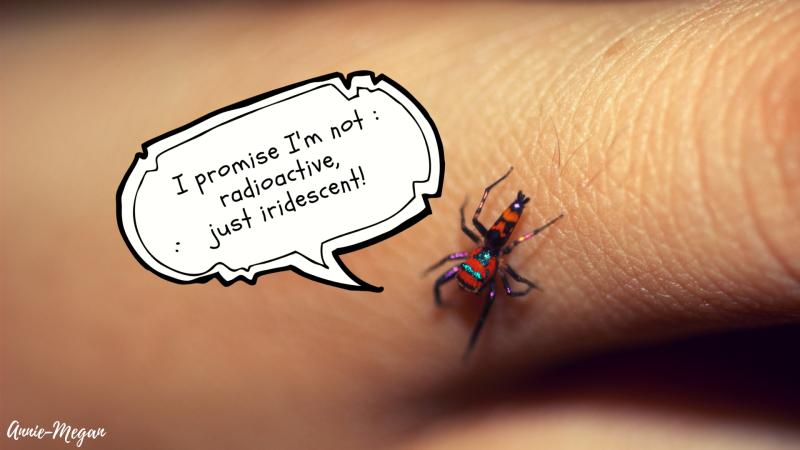
Have you ever chanced upon a tiny spider in your garden, or perhaps on the wall of an old building, that swiftly jumped away as soon as you noticed it? Chances are that you spotted a spider of the Salticidae family. Jumping spiders, as they are commonly termed, are known for their leaping abilities, active hunting behaviour and impressive vision. It is hard to imagine that these wee arachnids have evolved a complex system of signalling using colours.
Males of some species of salticids display vivid colours on their bodies that seem to change when seen from different angles. This property of colour change of a surface is called ‘iridescence’. These structural colours are produced by a multilayer reflector system. The body of the spider is covered by minuscule scales. Each scale is composed of a layer of air sandwiched between two layers of chitin - a tough, semi transparent material. The layers are arranged at just the right periodicity so that light waves reflected off each interface are in phase, giving rise to constructive interference. This produces brilliant flashes of colour that change with the angle of viewing.
Scientists have shown that iridescent colouration can be a good indicator of a spider’s condition and health. Younger and better nourished adult males have brighter and more intense colouration. Males exhibit the eye-catching colouration on their back and abdomen in interactions with other males. Rival males may assess the odds of winning a competition based on a visual encounter alone and choose not to engage in a physical fight that might prove costly. Members of the same species can use colours present on the mouthparts to recognise each other. Some species even use UV- iridescent patches in elaborate courtship and in choosing mates.
Given that their highly evolved vision facilitates visually-mediated behaviour, these diminutive creatures could help us delve deeper into animal colour communication.





